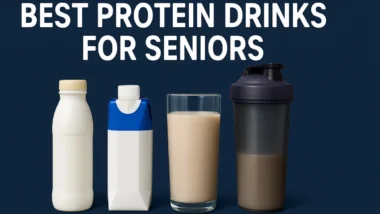Free Medicare Part B : Eligibility, Income Limits & How to Apply
Medicare Part B can be costly—over $174.70 a month in 2025. But what if you could get it completely free? The U.S. government offers several programs to cover these costs for low-income seniors and individuals with disabilities.
What Is Medicare Part B?
Medicare Part B is the part of Original Medicare that covers outpatient care. It includes:
- Doctor visits (primary care and specialists)
- Outpatient hospital services
- Durable medical equipment (wheelchairs, walkers, etc.)
- Preventive services (flu shots, cancer screenings)
- Mental health services
- Lab tests and imaging (X-rays, MRIs)
- Ambulance services
Unlike Part A (which is usually free for most seniors), Part B comes with a monthly premium — unless you qualify for help.
What Is the Medicare Part B Premium in 2025?
In 2025, most people pay the standard monthly premium of $174.70.
But there are two important caveats:
- Higher-income seniors may pay more, up to $594.00/month, due to something called IRMAA (Income-Related Monthly Adjustment Amount).
- Low-income seniors may pay $0, thanks to Medicare Savings Programs.
2025 Part B Premium Table
| Income Range (Individual) | Monthly Part B Premium |
|---|---|
| Up to $103,000 | $174.70 |
| $103,001 – $129,000 | $244.60 |
| $129,001 – $161,000 | $349.40 |
| $161,001 – $193,000 | $454.20 |
| $193,001 – $499,999 | $559.00 |
| $500,000+ | $594.00 |
But here’s the good news: Most seniors earning below $1,700/month as individuals may be eligible for help.
Who Qualifies for Free Medicare Part B?
You may qualify for Free Part B if you meet these 3 conditions:
- You’re enrolled in Original Medicare (Part A and B)
- Your monthly income is within limits (set by your state)
- Your resources/assets (like savings) are below a certain threshold
In most states, there are 4 types of Medicare Savings Programs (MSPs) that help.
Learn More: Hypertension &Tinnitus: Can High Blood Pressure Cause Ringing in the Ears?
1. QMB – Qualified Medicare Beneficiary Program
This is the most generous program. If you qualify for QMB:
- You pay $0 for Part B premiums
- You pay $0 for Part A and Part B deductibles
- You pay no more than $4.50 for medications (if you have Part D)
2025 Income & Asset Limits (most states)
- Individual: $1,275/month income, $9,430 in assets
- Married couple: $1,724/month income, $14,130 in assets
NOTE: Alaska and Hawaii have slightly higher limits.
2. SLMB – Specified Low-Income Medicare Beneficiary
Covers Part B premium only. You must still pay deductibles and copays.
- Individual: $1,526/month income
- Couple: $2,064/month income
- Asset limit: Same as QMB
3. QI – Qualifying Individual Program
Another program that pays your Part B premium. But you must apply every year, and priority goes to first-time applicants.
- Individual: $1,715/month income
- Couple: $2,320/month income
- Asset limit: Same as above
4. QDWI – Qualified Disabled Working Individual
For disabled individuals under 65 who lost premium-free Part A due to going back to work. Less common for seniors.
What Counts as “Income” and “Assets”?
Let’s clarify this, because a lot of people miss out on benefits due to confusion.
Income Includes:
- Social Security income
- Pension income
- Employment wages
- Veterans benefits
- Rental income
Income Exclusions (often not counted):
- SNAP (Food stamps)
- Housing assistance
- Home energy assistance (LIHEAP)
Assets Include
- Checking & savings accounts
- Stocks, bonds, IRAs
- Real estate other than your primary home
Assets Not Counted
- Your primary home
- One car
- Burial plots and up to $1,500 in burial funds
Dual Eligibility: Medicare + Medicaid
If you’re already on Medicaid, chances are you already qualify for Free Part B.
Each state manages Medicaid differently, but in most cases:
- Medicaid covers Medicare premiums
- Medicaid acts as secondary insurance
- You pay nothing for most services
Contact your state Medicaid office to check or apply.
How to Apply for Free Medicare Part B (Step-by-Step)?
Here’s exactly what to do.
Step 1: Gather Your Info
- Social Security number
- Proof of income (bank statements, award letters)
- Proof of assets
- Medicare card
Step 2: Contact Your State Medicaid Office
- Call the Medicaid office directly
- Or visit BenefitsCheckUp.org for state-specific help
Step 3: Fill Out an MSP Application
Most states offer paper and online forms.
Example:
- California – Medi-Cal Application
- New York – Medicare Savings Programs – NYC.gov
Step 4: Follow Up
Applications take 30–45 days to process. You’ll get a notice in the mail.
Example: Mary from Texas
- Age: 72
- Monthly Social Security: $1,320
- Assets: $3,000 in savings
- Medicare Part A and B enrolled
She applied through Texas Medicaid for the QMB program. Her income and assets were under the limit, and she now pays:
- $0/month for Part B premium
- $0 copays for doctor visits
- Gets discounted prescription meds
Common Mistakes Seniors Make
- Thinking you’re automatically enrolled in help
- Not applying because “you think” you won’t qualify
- Missing annual recertification
- Not checking if your state has higher limits
Final Word
If you’re a senior living on a fixed income, don’t wait. You could save $2,096.40 per year just by getting approved for a Medicare Savings Program.
Start here: BenefitsCheckUp.org
Or call your local State Health Insurance Assistance Program (SHIP)
FAQs
Can I apply for MSPs if I already have Medicare?
Yes. You can apply at any time.
Is this the same as Medicaid?
No. But Medicaid enrollees often get Free Part B too.
What if I’m over the income limit by a little?
Some states have Medically Needy Spend Down programs.
Do I need to reapply every year?
Yes, especially for QI and SLMB programs.











